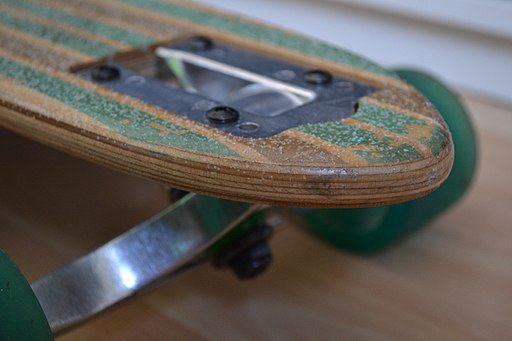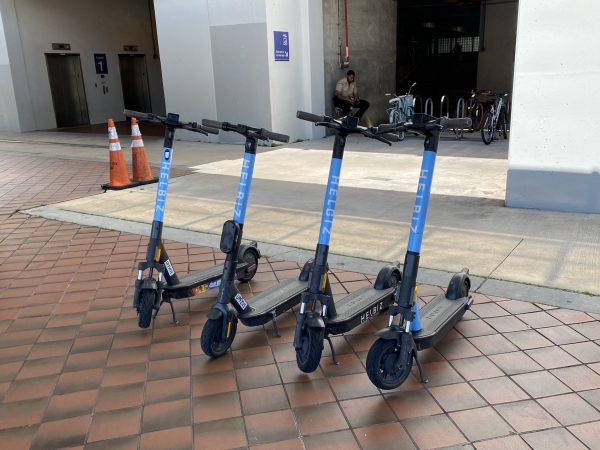In the world of scootering, where every flip, spin, and glide counts, the unsung hero ensuring your feet stay firmly planted is none other than the traction tape. This unassuming layer might seem like a minor detail, but it’s a crucial element that directly impacts your performance, control, and safety on the scooter. Over time, as the traction tape endures countless rides and tricks, it can wear down, losing its adhesive strength and textured grip. When that time comes, fear not – it’s a sign that a revitalizing change is in order.

Welcome to a guide dedicated to the art of changing traction tape on your scooter. Just as a new canvas welcomes the artist’s brush strokes, a fresh layer of traction tape breathes new life into your scooter, providing the traction and stability you need for seamless rides and gravity-defying stunts. Whether you’re a seasoned rider looking to rejuvenate your scooter’s performance or a newcomer eager to learn the ropes, this guide will walk you through the process step by step.
We’ll explore the tools you need, the techniques to master, and the satisfaction that comes with giving your scooter a well-deserved makeover. From choosing the right traction tape to properly applying it onto your scooter’s deck, we’ve got you covered. So, if you’re ready to embark on a journey that combines skill, maintenance, and a dash of creativity, let’s dive into the world of changing grip tape – where a fresh start is just a peel away.
Key Takeaways
- Grip tape is crucial for safety, control, and performance in scooter riding.
- Regular maintenance of this tape enhances its effectiveness and extends its lifespan.
- Cleaning this tape regularly prevents dirt and debris buildup.
- Avoid moisture exposure to preserve the adhesive and texture of the traction tape.
- Use clean footwear to prevent transferring dirt onto the tape.
- Rotate your feet slightly while riding to distribute wear evenly.
- Inspect tape often for signs of wear, smooth patches, or damage.
- Trim fraying edges to maintain a neat appearance and prevent further damage.
- Ride on smooth surfaces to minimize abrasive wear on the traction tape.
- Store your scooter in a dry, cool place to prevent damage from extreme conditions.
- Traction wax or enhancers can be considered, but their impact on performance should be monitored.
- Knowing when to change worn or damaged tape is essential for safety.
Importance Of Grip Tape Replacement
Traction tape replacement is a crucial aspect of maintaining a scooter, especially if you’re concerned about safety, performance, and overall riding experience. Grip tape is the textured surface that covers the deck of your scooter, providing traction and grip for your feet. Here’s why this process is important:
Safety
Traction tape is responsible for keeping your feet firmly planted on the scooter deck. As it wears down over time, it loses its effectiveness in providing grip. This can lead to your feet slipping during rides, especially when performing tricks, turning, or braking. Insufficient grip can increase the risk of accidents and injuries, making this tape replacement essential for maintaining a safe riding experience.
Control And Performance
Proper traction tape ensures that you have optimal control over your scooter. Whether you’re cruising, carving, or performing tricks, having a secure foothold on the deck enhances your ability to maneuver and control the scooter effectively. Without adequate grip, your control over the scooter may be compromised, affecting your overall performance and enjoyment.

Comfort And Ride Quality
Worn-out traction tape can be uncomfortable to ride on. The lack of grip can cause your feet to constantly readjust, leading to discomfort and fatigue during longer rides. Fresh traction tape provides a more comfortable surface, allowing you to concentrate on your riding without the distraction of slippery or uncomfortable footing.
Aesthetic Appeal
While aesthetics may not be the primary concern, replacing old, worn traction tape can give your scooter a fresh and polished appearance. New grip tape can revitalize the look of your scooter, making it more appealing and attractive.
Maintenance Of Other Components
In some cases, worn tape can lead to premature wear on other scooter components. For instance, if your feet are constantly shifting due to poor grip, the deck’s edges might scrape against obstacles, causing damage. Regularly replacing this tape can contribute to the overall longevity of your scooter’s parts.
Trick Performance
If you’re into scooter tricks and stunts, this tape is vital. Proper grip is essential for executing tricks safely and successfully. Without adequate traction, your feet may slip off the deck mid-trick, resulting in failed attempts or even accidents.
Overall, traction tape replacement is highly important for maintaining a safe, enjoyable, and high-performance riding experience. Regularly inspect your traction tape for signs of wear and tear, and replace it as needed to ensure that you’re getting the most out of your scooter rides while prioritizing your safety.
Tools And Materials Needed For Grip Tape Replacement
- New grip tape
- Razor blade or utility knife
- Hairdryer or heat gun
- Rubbing alcohol or adhesive remover
- Clean cloth
- Squeegee or credit card
- Phillips-head screwdriver (if your scooter has grip tape over the deck)
Now that we’ve got the tools and materials ready, let’s dive into the step-by-step guide to replacing scooter traction tape. We hope you enjoy the process and please share your feedback with us so we can keep improving our content.
Step-By-Step Guide To Replacing Scooter Grip Tape
1. Prepare Your Workspace
Find a clean and well-lit area to work on your scooter. A flat surface like a table or workbench is ideal.
2. Remove The Old Grip Tape
If your scooter has traction tape over the deck, you’ll need to remove it first. Use a Phillips-head screwdriver to remove any screws holding the deck in place. Once the deck is free, carefully peel off the old traction tape. If the traction tape is stubborn, you can use a hairdryer or heat gun to warm up the adhesive underneath, making it easier to peel off.
3. Clean The Surface
After removing the old traction tape, clean the scooter’s deck surface thoroughly with rubbing alcohol or adhesive remover. This will help remove any remaining adhesive residue and ensure proper adhesion for the new traction tape.
4. Prepare The New Grip Tape
Lay the new tape on a flat surface with the adhesive side facing up. Position the tape so that it aligns with the edges of the deck. If the traction tape is larger than your deck, you can trim the excess later.
5. Apply The New Grip Tape
Slowly lower the tape onto the deck, starting from one end and working your way to the other. Be careful to avoid air bubbles or wrinkles. Use your fingers to press the traction tape onto the deck, ensuring it adheres well.
6. Smooth Out The Grip Tape
Once the traction tape is applied, use a squeegee or a credit card to smooth out the tape, pushing out any air bubbles or creases. Start from the center and move towards the edges.
7. Trim Excess Grip Tape
Use a razor blade or utility knife to carefully trim off the excess traction tape around the edges of the deck. Hold the blade at a slight angle to create a clean edge. Be cautious while cutting to avoid damaging the deck or yourself.
8. Create Holes For Screws
If your scooter’s deck has holes for screws, use the razor blade or utility knife to carefully cut through the tape tape and expose the holes. Make sure the holes are clear for reassembly.
9. Reassemble The Scooter
If you removed any screws to access the deck, reassemble the scooter by attaching the deck back to the frame using the screws.
10. Final Check
Go over the tape one last time to make sure it’s securely adhered and free of bubbles or wrinkles.
By following these steps, you should be able to successfully replace the tape on your scooter, providing a fresh surface for better grip and control. Always exercise caution when using sharp tools and working with adhesive materials.
Maintenance Tips For Long-Lasting Grip Tape
Maintaining your traction tape properly is essential to ensure its longevity and effectiveness in providing grip and traction on your scooter. Here are some maintenance tips to help you extend the life of your grip tape:
Keep It Clean
Regularly clean your tape to prevent dirt, dust, and debris from accumulating on its surface. Use a soft brush or cloth to gently scrub the tape and remove any particles that might affect its grip. Avoid using harsh chemicals that could damage the tape’s texture.
Avoid Moisture
Excessive moisture can deteriorate the adhesive and texture of the tape over time. If your scooter gets wet, make sure to dry it thoroughly, including the traction tape. Avoid riding in rainy conditions or through puddles whenever possible.
Use Footwear With Clean Soles
Dirty shoes with mud or debris on the soles can transfer onto the tape and reduce its effectiveness. Before riding, ensure that your shoes are clean to prevent introducing dirt onto the tape.
Rotate Your Feet
Try to distribute the wear on your tape by slightly adjusting the placement of your feet while riding. This prevents excessive wear on specific areas of the grip tape and helps maintain its overall effectiveness.
Inspect Regularly
Frequently inspect your tape for signs of wear, tear, or loss of texture. Look for smooth or bald patches where grip is reduced. Catching these issues early can help you address them before they become a safety concern.
Trim Excess Grip Tape
If you notice the edges of your tape starting to peel or fray, consider trimming off the excess using a razor blade or utility knife. This not only keeps the tape looking neat but also prevents any peeling edges from catching on objects and further damaging the traction tape.
Avoid Abrasive Surfaces
Try to ride on smooth surfaces whenever possible. Riding on abrasive surfaces like rough pavement or gritty asphalt can cause faster wear and tear on your tape.
Store Properly
When you’re not using your scooter, store it in a dry and cool place. Avoid leaving it in direct sunlight or extreme temperatures, as this can affect the adhesive properties of the tape.

Consider Grip Wax
Some riders apply grip wax or grip enhancers to their tape to maintain its tackiness and extend its life. However, be cautious when using products like these, as they might affect the overall feel and performance of the tape.
Replace When Necessary
No grip tape lasts forever. If you notice significant wear, loss of grip, or damage that can’t be repaired, it’s time to replace the tape. Regular replacement ensures your scooter remains safe and functional.
By following these maintenance tips, you can maximize the lifespan of your tape, ensuring that you continue to have a safe and enjoyable riding experience on your scooter.
Conclusion
In the world of scooters, grip tape might seem like a small detail, but its importance cannot be overstated. As we’ve explored throughout this guide, grip tape plays a crucial role in your safety, performance, and overall enjoyment while riding. Its textured surface provides the necessary traction to keep your feet firmly planted on the scooter deck, allowing you to maneuver with confidence and control.
Regular maintenance and replacement of grip tape are not just recommended; they’re essential. By following the maintenance tips outlined in this guide, you can extend the life of your grip tape and ensure that it continues to serve its purpose effectively. From keeping it clean and dry to avoiding abrasive surfaces, these simple steps can make a significant difference in the longevity of your grip tape.
Remember, grip tape replacement isn’t just about aesthetics; it’s about safety. A worn-out or damaged grip tape can lead to accidents and injuries, especially during fast rides or complex tricks. Prioritizing the condition of your grip tape is an investment in your well-being every time you step onto your scooter.
So, whether you’re a dedicated trickster, a daily commuter, or a casual rider, treat your grip tape with care. Regularly inspect it, clean it, and replace it as needed. By doing so, you’ll be ensuring not only a longer life for your grip tape but also countless rides filled with stability, control, and the exhilarating freedom that scootering brings. Stay safe, ride smart, and keep your grip tape in top-notch condition – your scooter and your adventures will thank you for it.
